I found myself standing between ancient marble pillars as the sun started its slow slide toward the horizon. The fading light turned those white columns into glowing gold, and honestly, I just stopped in my tracks for a moment.
You can read about sunset light all you want, but nothing really prepares you for how it dances across old stone, making it feel almost supernatural.
The golden hour comes twice a day, but this evening felt different. The warm glow coated everything in deep amber, and as the first stars blinked on, I realized no camera could catch what I was seeing.
I couldn’t help but think of Helios, the old Greek sun god, steering his chariot across the sky. It felt like the end of a journey—his, mine, maybe even the day’s.
There’s something deeply moving about watching a sunset in a place that feels ancient. Most travelers rush through old sites in the midday heat and miss this kind of magic.
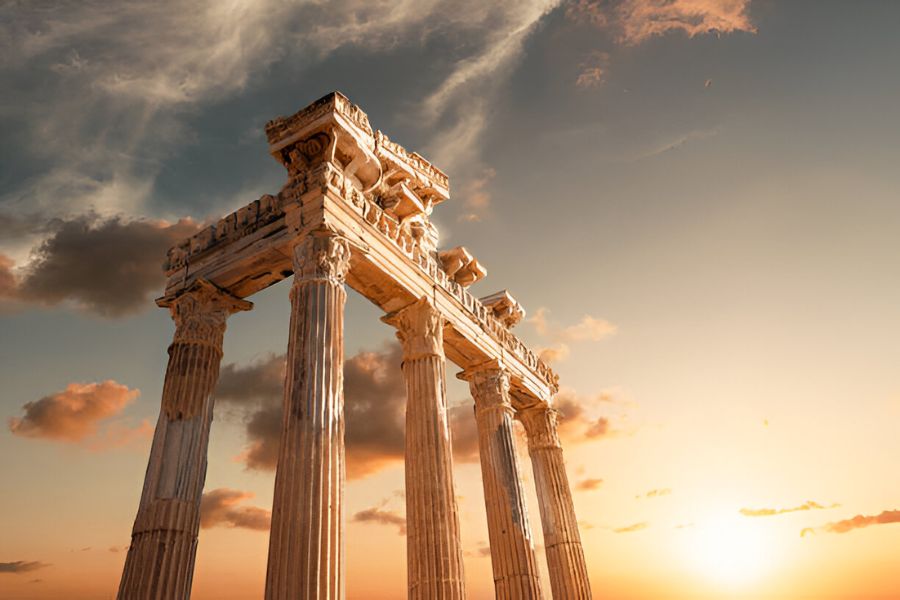
That night among the columns, I learned to slow down and just let the moment happen. When the world pauses like that, you see its real splendor.
Witnessing Golden Light: The Sunset Transformation
I watched the ancient temple change as day gave way to evening. The stone, so plain at noon, became something magical once the sun’s last rays hit it.
Ancient Columns Awash in Sunlight
I got to the temple about an hour before sunset. By then, most tourists had already wandered back to town.
This was exactly what I wanted—the so-called “golden hour” was just getting started. The sun hung low, throwing a warm, amber light on everything.
The columns, battered by centuries, stood tall against the darkening sky. As the sun dropped, its light shifted from white to gold, pouring over the old stones.
The effect stunned me. What looked gray and worn earlier now glowed with honey-colored warmth.
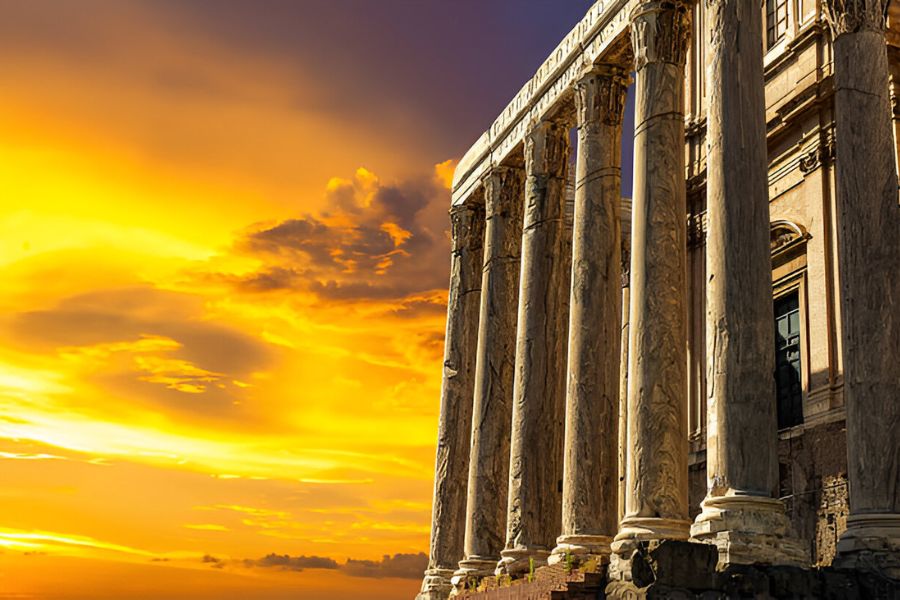
I noticed every crack and carving. The sideways light made the texture stand out, almost like the columns had new stories to tell.
Shifting Shadows on Weathered Stone
Shadows crept slowly across the temple grounds. Long, dark lines stretched east, getting longer every minute.
The contrast between light and dark felt more dramatic than I expected.
Places that had been lit up just moments before slipped into shadow, while others suddenly shone. The columns threw bold silhouettes over the courtyard.
What really caught my eye was how the shadows revealed details I’d missed. Carvings that blended in at noon now popped out, clear and sharp.
The dance between light and darkness made the whole site feel alive in a way I hadn’t imagined.
The Changing Energy of Twilight
As sunset truly arrived, the whole mood shifted. The golden light deepened, turning almost copper-red in those last moments.
Birds called out as evening settled in, giving the scene a natural soundtrack. The air cooled fast, which felt like such a relief after the heat of the day.
People spoke in hushed voices, as if we all sensed something special was happening.
Nature really knows how to set a scene. The fading light, the cooling air, and the silent temple created a kind of magic I’ll never forget.

I stayed until the last bit of sun slipped away. The golden glow faded, and the stones returned to their usual color, now washed in the cool blue of night.
The Ancient Columns: History, Artistry, and Mystery
Standing in front of these old pillars, I can’t help but feel their quiet strength. These ancient columns hold stories from lost civilizations, clever builders, and mysteries that still puzzle experts.
Stories Carved in Stone: From Ruins to Relics
These columns have stood for nearly 2,500 years, built in a time when art and architecture were inseparable. Every groove and carving shows the careful work of ancient hands.
As I walked around their bases, I saw how time had changed them. They once stood flawless, but now they wear the beautiful marks of history.
The surface tells stories through its rough texture.
Many of these columns once lined grand routes by the Nile, marking temples and places of power.
Archeologists have spent years studying the symbols and hieroglyphs carved into some of the stones. Each new discovery brings us closer to understanding how people lived back then.
Architecture Echoing Ancient Ages
The columns follow specific styles—Doric, Ionic, Corinthian. I find it fascinating how these designs spread all over the Mediterranean.
What amazes me is the engineering. Builders lifted these massive stone structures with just ropes, wood frames, and sheer determination.
The columns weren’t just for holding up roofs. Some represented cosmic ideas. In certain temples, 24 pillars stood for the hours of the day, tying the building to the sun’s path.
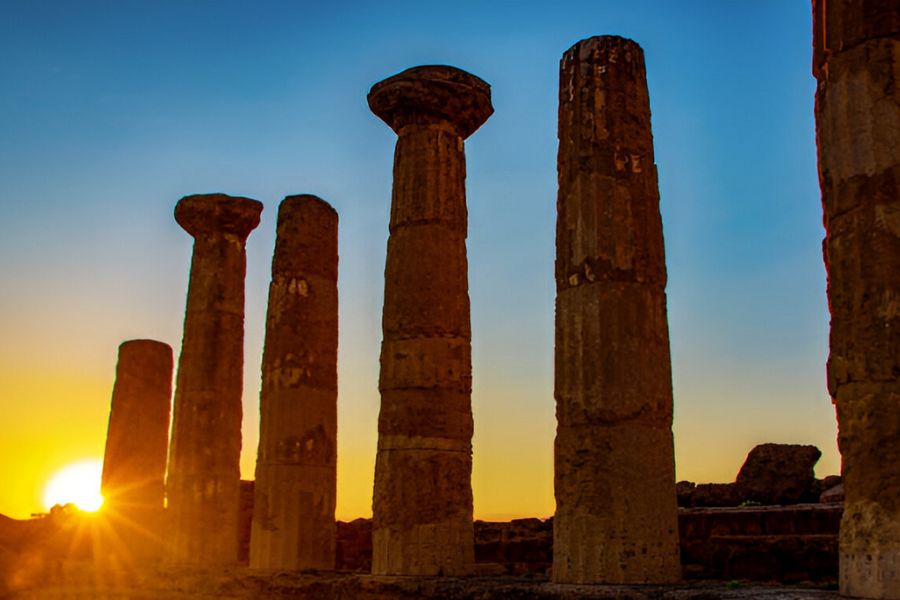
Many columns use sacred geometry and careful math. Their proportions weren’t random; builders calculated them for balance and harmony.
Mysteries and Legends Surrounding the Columns
Local guides love to share legends about these ruins. One story claims the columns glow from within during rare astronomical events, but I haven’t seen that myself.
The biggest mystery is how so many columns have survived earthquakes and wars. Some think ancient builders understood seismic forces better than we realize; others just credit the quality of the stone.
A few columns hide secret chambers that researchers only found in recent decades. Who knows what’s still hidden inside these stones?
I learned that some columns act as solar calendars. Sunlight hits specific carvings only during the solstice or equinox, connecting stone and sky in ways that still feel mysterious.
Emotional Reflections in the Golden Hour
As the sun dipped behind the columns, something shifted inside me. The golden light didn’t just change the stone—it changed how I felt, too.
A Moment of Inspiration and Hope
Sitting among the ancient ruins as the golden hour settled in, I felt the warm light wrap everything in a soft glow. The old columns almost looked alive again.
Hope crept in, quietly but unmistakably. Seeing these structures—thousands of years old—still standing in the fading light filled me with a kind of inspiration I hadn’t expected.
“Some things last,” I whispered, tracing my fingers along the sun-warmed stone.
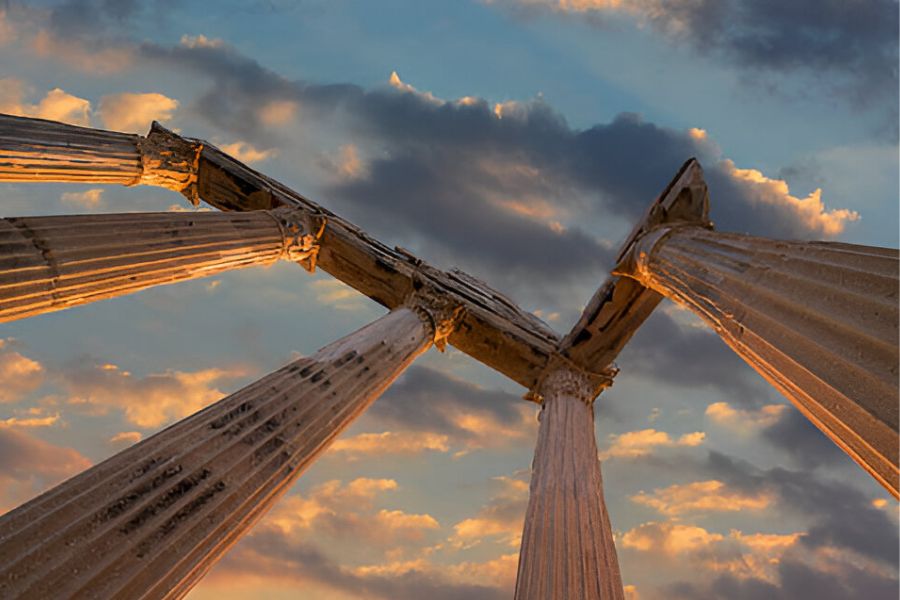
These columns have seen so many sunsets. Each one paints them differently. My own worries seemed smaller, somehow. If these pillars could survive centuries of storms and still shine, maybe I could handle my own struggles.
Memories Woven with Light
That golden light took me back to childhood evenings in my grandmother’s garden. She told stories as the sun set, her face glowing with the same warm colors I now saw on the columns.
These stones hold memories, too—not just mine, but those of everyone who’s stood here before. I pictured Romans, medieval travelers, Victorian explorers, all watching the same light show.
My memories mixed with theirs in the amber glow. I snapped photos, but they couldn’t capture this feeling—this odd sense of connection across time.
“This is why I travel,” I thought. Not just to see new places, but to feel those threads that tie us to the past.
Contemplating Youth, Aging, and Legacy
The fading sun threw long shadows over the ruins, quietly reminding me that time moves on. I started thinking about aging—how these columns have grown more beautiful, not less, as the years passed.
Their cracks and flaws caught the golden light in surprising ways. There’s a lesson there about growing older with grace.
“What will I leave behind?” I wondered. The builders who made these columns left something that still moves people today.
The stones seemed wise in their silent endurance. They didn’t try to be perfect—just strong, weathered, and a little bit magnificent in the evening light.

I stayed until the last bit of glow faded, grateful for a moment when time felt slower and wisdom felt as real as the stone under my hands.
Nature and the Elements: The Sunset Experience
The sunset at the ancient columns depended on the elements all around me. Wind, weather, and the nearby landscape shaped the unique atmosphere and made the golden hour even more magical.
Wind, Weather, and the Season’s Influence
Spring in Egypt gave me the perfect conditions for watching the sunset. The air felt warm but not hot, hovering around a comfortable 75°F.
Gentle desert winds brushed against my skin and brought the scent of distant flowers. The breeze made my light shirt ripple and added a bit of drama to the scene.
That day, the weather played nice—clear skies, just a handful of clouds that later turned orange and pink as the sun set.
Locals say autumn and winter sunsets here look different—softer colors, longer twilight. My spring visit gave me bold colors and just-right weather for lingering.
Desert Surroundings and the Nile’s Presence
The columns sit right where desert meets river. On one side, golden sand stretches out, glowing in the late sunlight.
The Nile’s nearby waters reflect the sky, doubling the sunset’s impact and adding a mirror-like magic to the view. Along the banks, palm trees sway gently.
This contrast between river and desert affects everything—air moisture, how far you can see, and how the light plays on the stones.

Guides explained that the Nile brings life to the area. Birds swoop overhead at dusk, and sometimes you catch a glimpse of river creatures. This living ecosystem added another layer to my experience, linking ancient history with the rhythms of nature.
Poetry, Meaning, and the Human Experience
Poetry tries to pin down moments like sunsets, turning them into reflections on life, death, and everything in between. The golden light at dusk has inspired writers for ages, tying us to old wisdom and our own ideas of beauty.
Sunset as a Metaphor in Literature
Writers have used sunsets as symbols of endings and change for centuries. I’ve noticed that poets often use the daily death of sunlight to talk about our own mortality. One article puts it well: “Sunsets are a metaphor for the human condition: we are here for a very short time, and we glow and expand and change.”
Langston Hughes comes to mind—he wrote about rivers and sunsets: “I’ve seen its muddy bosom turn all golden in the sunset.” He managed to tie human experience to what he saw, making meaning out of everyday beauty.
The brief, intense beauty of sunset makes it a perfect metaphor for how short and bright life can be. Standing there, watching those columns turn gold, I finally understood why so many poems use that image.
Echoes of Percy Bysshe Shelley and Mark Twain
Shelley loved to set nature’s grandeur against human monuments. His poem “Ozymandias” pops into my head when I see sunlight on ancient ruins—both remind us how temporary our achievements are.
Mark Twain, though not a romantic poet, wrote about sunsets on the Mississippi with real feeling. He mixed humor and awe, showing how even practical people get swept up by natural beauty.
Both writers knew that landscapes shape how we think. Twain called sunsets daily miracles, while Shelley saw them as symbols of fleeting glory.
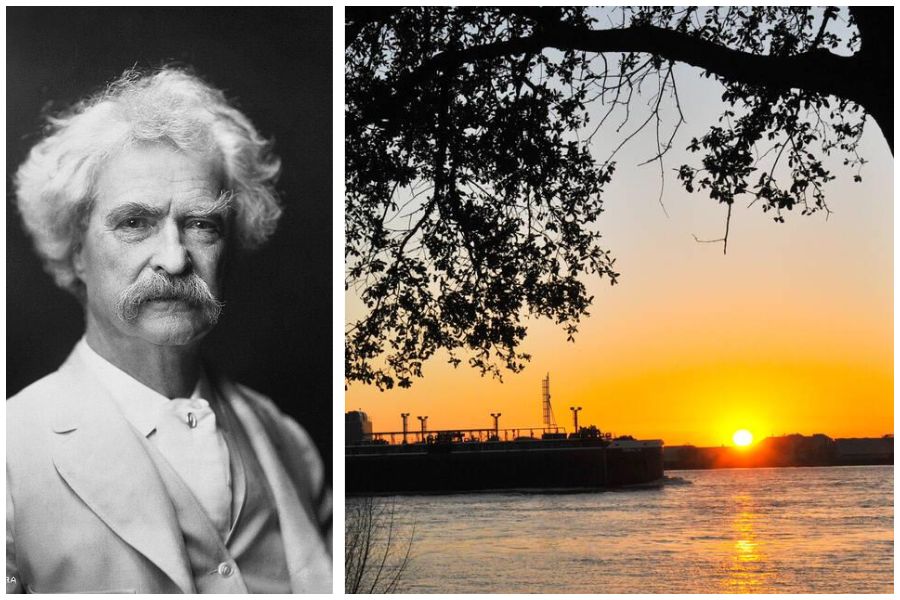
Their words helped me appreciate my own sunset among ancient columns, connecting me to a long tradition of wonder and reflection.
Art, Virtue, and Truth in Ancient and Modern Times
The Greeks didn’t just build columns for support—they used them as symbols of order and beauty.
When sunlight hits these structures at the end of the day, I can’t help but notice the link between art and truth that philosophers have debated for ages.
During World War II, bombs threatened many ancient sites. People stepped up to save these monuments, showing that we still care about knowledge and beauty, even in the darkest times.
I think there’s real virtue in preserving both the columns and the poetry that honors them. They show that we choose beauty and knowledge instead of chasing quick rewards.
As the golden light disappears from marble columns, something about that moment sticks with us. We try to hold onto it in the poems we write.
That’s how art manages to keep truth alive, passing it down from one generation to the next.

